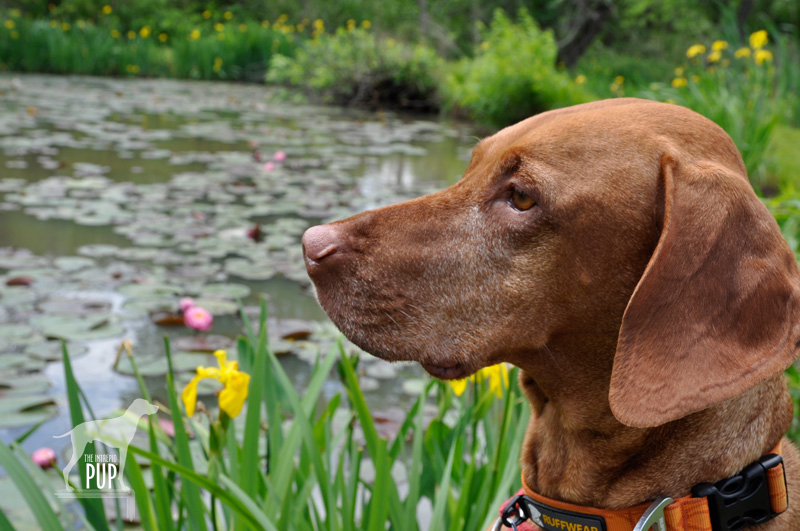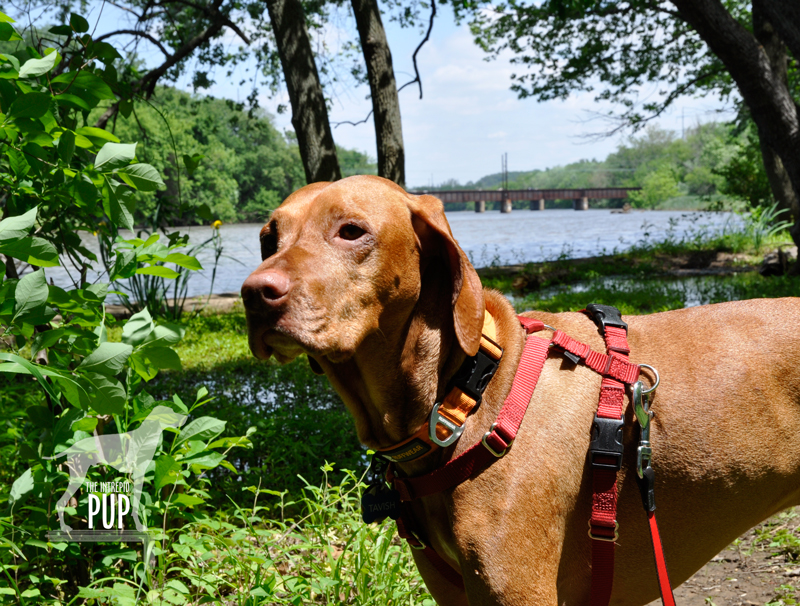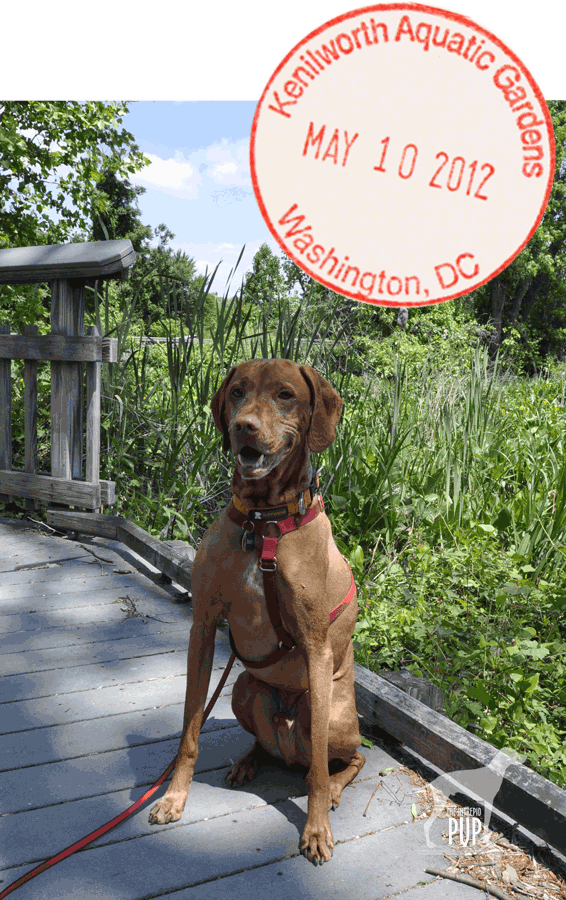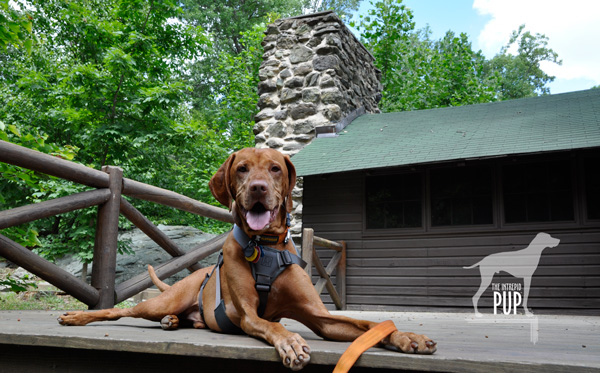
In visiting Rapidan Camp, Herbert Hoover’s presidential retreat in Shenandoah, the Intrepid Pup follows in the footsteps of such luminaries as aviator Charles Lindbergh and inventor Thomas Edison. Here, Tavish lounges on the porch of Brown House, the Hoovers’ personal cabin, at the terminus of the 2-mile Mill Prong Trail.
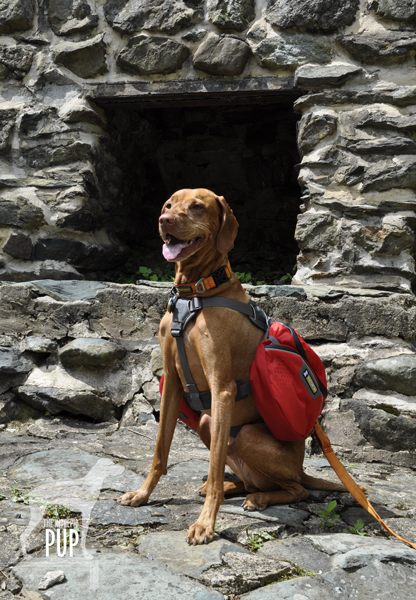
Rapidan Camp’s outdoor fireplace provides a good backdrop for photos, just as it did in Hoover’s time.
From 1929 to 1932, President Herbert Hoover and First Lady Lou Henry Hoover relished their rustic fishing camp in Shenandoah. Fortunately, three of the 13 original buildings constituting their Rapidan Camp have been preserved, and you can enjoy it, too.
One option is to board a shuttle bus at the Byrd Visitor Center for a ride down a fire road as part of a three-hour, ranger-led tour. But you can’t bring your dog. And that hardly seems sporting when the second option is a moderate hike that’s dog-friendly. The trail to Rapidan winds through the very forests that so appealed to the Hoovers as a presidential retreat just 100 miles from the pressures and summer humidity of Washington, DC. The Hoovers built the camp with their own funds, the design largely influenced by the First Lady’s own experience in working with the Girl Scouts. Their personal cabin, known simply as The Brown House, had a comfortably open floor plan, welcoming hearth, and Navajo rugs. The president maintained a separate bedroom/office so he’d not disturb his sleeping wife when White House business kept him burning the midnight oil. Meals were eaten in a communal mess hall to promote camaraderie. Days were spent fishing, horseback riding, and entertaining a steady stream of official guests.
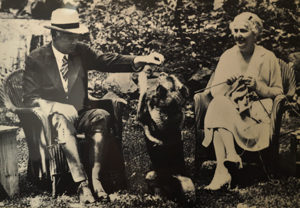
The Hoovers had several dogs, but it’s their Norwegian Elkhound named Weejie who most often appears in Rapidan Camp press photos like this one from 1932. This particular AP image is part of the onsite interpretive exhibit at Rapidan’s Prime Minister’s Cabin.
Hiking into Rapidan affords you the opportunity of getting the lay of the land. Outdoor signage marks where the other buildings used to stand, and the Prime Minister’s Cabin (so dubbed for Ramsay MacDonald’s visit in 1929) now contains a comprehensive exhibit about the Hoovers and how their presence shaped development in the region. In addition, a park volunteer is on hand most of the year to answer questions and provide hikers with impromptu tours of the Brown House. Our arrival was met by a very personable and knowledgeable history Ph.D. graduate student named Jonathan who was living onsite in the Creel House and serving as Rapidan’s resident caretaker for the summer. From him we learned that Hoover gifted Rapidan Camp to the government upon leaving office, and the camp was incorporated into Shenandoah National Park in 1935. The camp enjoyed use by the Boy Scouts up until 1959, when the Park Service removed all but the existing three structures. Rapidan continued to host senior U.S. officials into the early 1990s, although Maryland’s Camp David had long since supplanted Rapidan as the official presidential retreat.
The grounds and buildings underwent a full restoration in 2004 to return them to how they appeared during the Hoovers’ residence, and they remain a fascinating time capsule of a bygone era.
Dogging the Details
 38°29′26.49″N, 78°25′10.93″W
38°29′26.49″N, 78°25′10.93″W
Rapidan Camp, Shenandoah National Park, VA (trailhead at Milam Gap)
The Intrepid Pup wag-a-meter registers an emphatic “2” for this excursion. It requires a modicum of pre-planning, but the pay-offs include a good workout and a unique historical destination.
With more than 500 miles of hiking trails and only 10 trails on which pets are not permitted, there’s a lot for you and your leashed dog to explore at Shenandoah National Park. If you’re coming by car, there’s a $15 entrance fee per non-commercial vehicle (slightly less if it’s December – February), and your pass is good for the day of entry and the next 6 days, so you’re definitely getting your money’s worth. Road and trail maps are available at any of the ranger stations, and you can download a map for the Rapidan Camp area here.
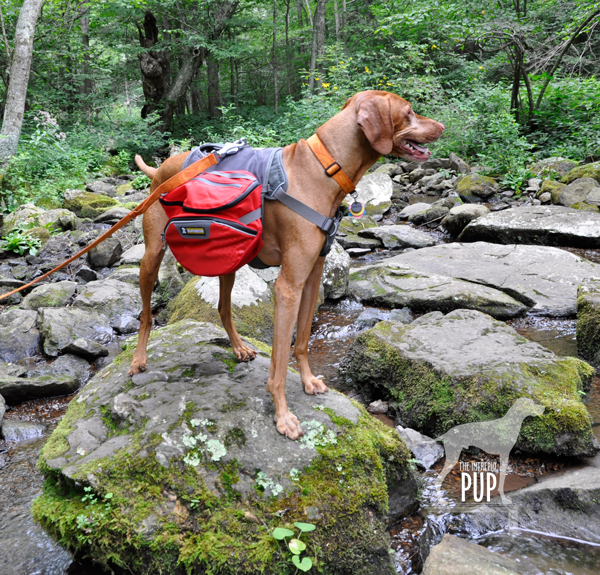
Tavish at one of three stream crossings en route to Rapidan Camp
Begin your journey by parking at the Milam Gap pull-off just shy of mile marker 53 along Skyline Drive. The Mill Prong Trail is the most direct route to Rapidan Camp, and the trailhead is just across the street from the parking area. The path is shady, well-groomed and well-marked with tree blazes and concrete posts at trail junctions. It’s two miles downhill on the way in. There are three water crossings, but unless the streams are running high, you can easily ford them by stepping from boulder to boulder. With the last water crossing at Big Rock Falls—a distinctive but gentle cataract flowing into a shallow pool—you’re on final approach to Rapidan Camp.
Nature-wise there were butterflies, huge millipedes, and a couple of chipmunks. Ultimately we encountered more gnats (note: insect repellent is helpful) than hikers and saw no other dogs…but we suspected that it gets more crowded on the weekends. Hiking in took an hour but included several photo stops. For the return trip, we hiked out the same way we came (for a 4-mile round trip total). But if you’re up for a longer circuit hike (7.4 miles total), the alternative is to pick up the Laurel Prong Trail at Rapidan Camp and follow it until it intersects with the Appalachian Trail, which turns northward over Hazeltop Mountain and ends back at the Milam Gap parking area.
Pet-friendly lodging:
Team Tavish enjoys camping, but for this particular trip we had sought a night’s stay in pet-friendly accommodations and were pleased to find a few choices. There are a limited number of in-park, pet-friendly rooms at Lewis Mountain Cabins, Skyland, and Big Meadows Lodge. We opted for a traditional room at Big Meadows, as it was closest to the trailhead for Rapidan Camp. It was reasonably priced and offered adequate amenities: coffee maker, double beds, and a small bathroom (no phones or TVs, but there is wi-fi and a TV room in the main building, if you’re so inclined). While dogs aren’t allowed inside the main lodge where the dining options are, you can get pub fare from the Taproom restaurant and eat on the terrace with its none-too-shabby view of the sunset over the Blue Ridge. We saw probably a half dozen dogs being walked on the grounds the next morning, so clearly we weren’t the only ones availing ourselves of the pet-friendly lodging.
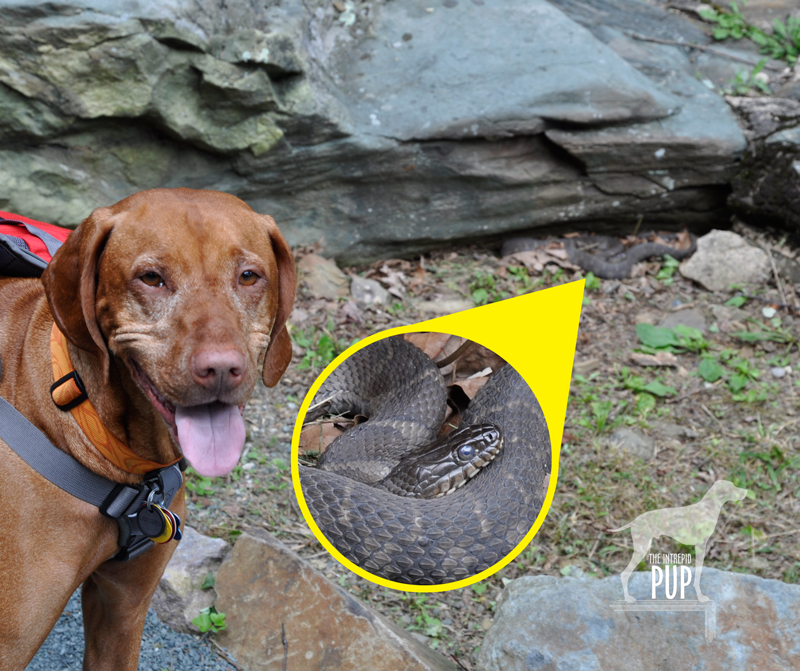
From a safe distance, Tavish observes what was by all accounts Rapidan Camp’s resident non-venomous snake. We’d read that snakes can strike at a distance up to half their body length. Had this been one of Shenandoah National Park’s pit vipers—identifiable in part by their more triangular-shaped heads—Intrepid Pup wouldn’t be posing for a photo.
Special considerations:
Mosquitoes and ticks are almost givens in any woodland excursion, but hiking in Shenandoah presents two additional cautions (yay!): snakes and bears. Poisonous copperheads and rattlesnakes do reside in the park. Read up on dog-versus-snake encounters, and you’ll be sufficiently freaked out. Dogs usually weigh less than people and thus are more readily “incapacitated” (to use a euphemism) by snake venom. That being said, the snakes in Shenandoah aren’t exactly out trolling for hikers and dogs and would much rather be left alone. In the end, Team Tavish concluded that basic avoidance was going to carry the day, and our modus operandi was hyper-vigilance about not letting Tavish stray from the main trail so he could literally let sleeping snakes lie.
Shenandoah National Park also has one of the densest populations of American black bears in the United States, and pretty much any piece of park literature you’re apt to find includes information about bear safety. They’re purportedly “skittish” and tend not to pose any threat so long as you give them a wide berth, keep food out of the equation, and don’t run away. Another oft-repeated piece of advice is to “let the bear know you’re human” (i.e. wave your arms, make noise, speak in normal tones, etc.), but our travel companion—a close family friend and fellow blogger—joked that in the event of a bear encounter she would also be readily enumerating her other human attributes like, “I can read, I have opposable thumbs, and I have relatives that care about me.” As it turns out, we were glad to have reviewed bear basics because while hiking the 4-mile Rose River Loop Trail the next day, some oncoming hikers alerted us that they had just seen a bear not 200 yards ahead. They said it had shuffled off into the woods when it heard them approaching and, indeed, we never saw it. We did, however, catch a glimpse of a bear standing at the side of the road as we were driving out of the park.
Special gear:
While you can count on temperatures being cooler in the mountains, you still need to keep hydrated, so bring plenty of water for yourself and your dog. Team Tavish used a CamelBak for water and snacks, and Tavish carried his own water and gear in Ruffwear’s Palisades Pack™ (be on the lookout for an upcoming product review in the near future). Remember to keep your dog on a 6-foot leash as the park’s leash policy is enforced for the safety of dogs, visitors, and wildlife alike. Finally, beautiful scenery is at every turn, so don’t forget to pack a camera!

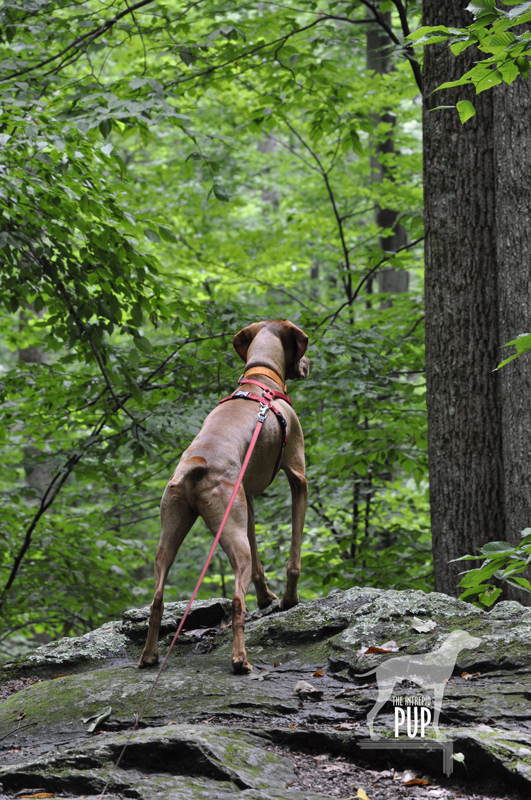
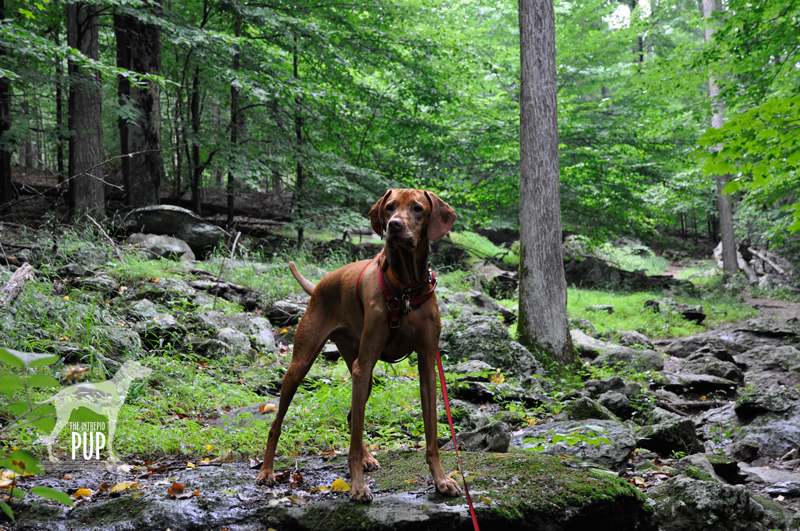
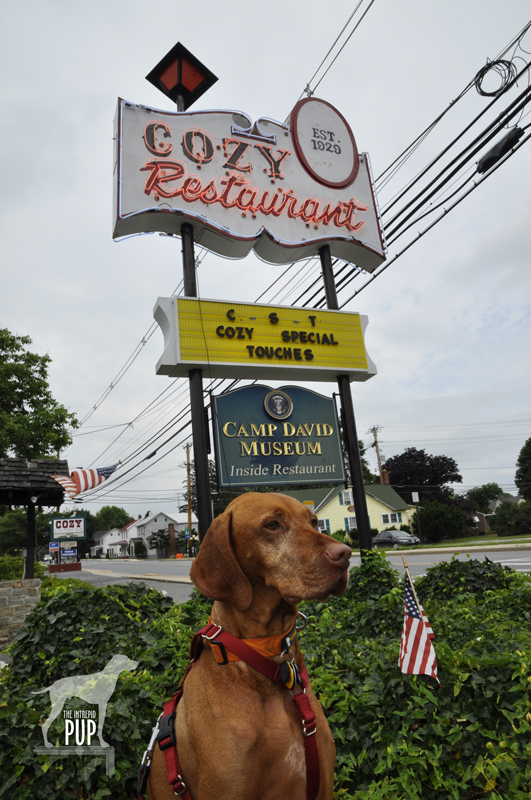 A modest-sized room off the main dining area serves as the gallery chock full of photographs and memorabilia highlighting the Cozy’s Camp David connections to 13 presidential administrations and counting. There’s a perfect photo opp beneath a rustic “Camp David” sign, but sorry, no dogs allowed inside.
A modest-sized room off the main dining area serves as the gallery chock full of photographs and memorabilia highlighting the Cozy’s Camp David connections to 13 presidential administrations and counting. There’s a perfect photo opp beneath a rustic “Camp David” sign, but sorry, no dogs allowed inside.
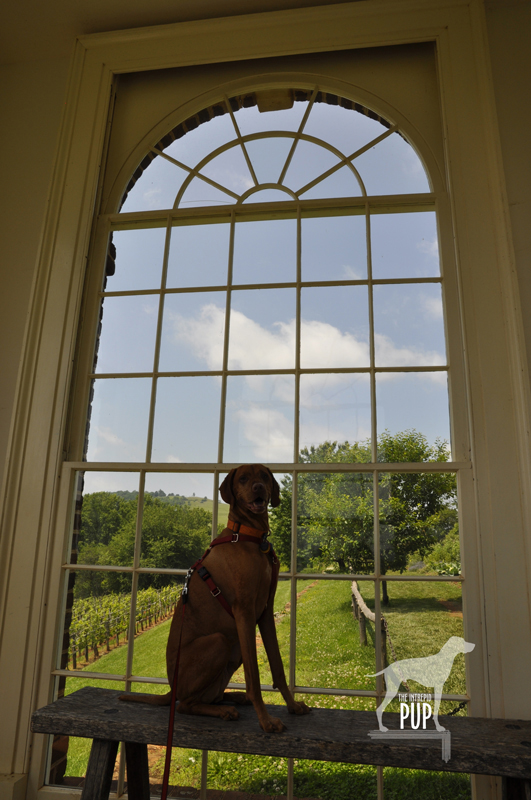
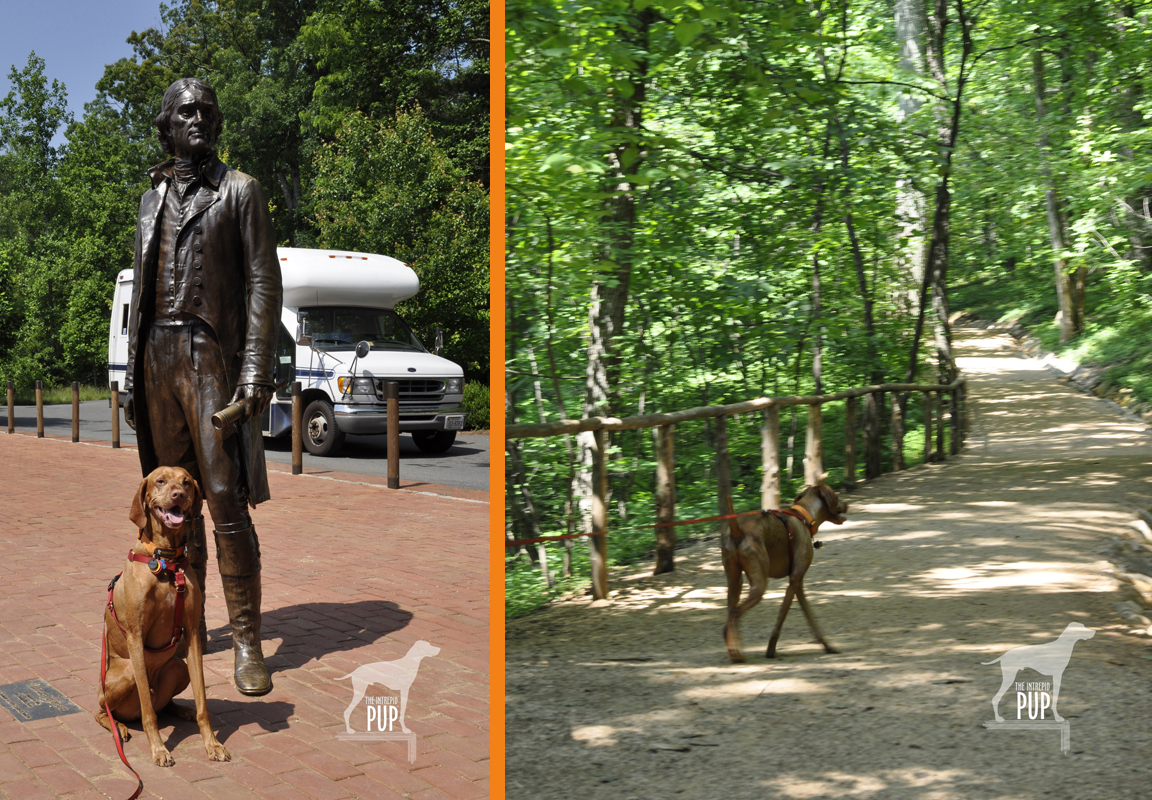
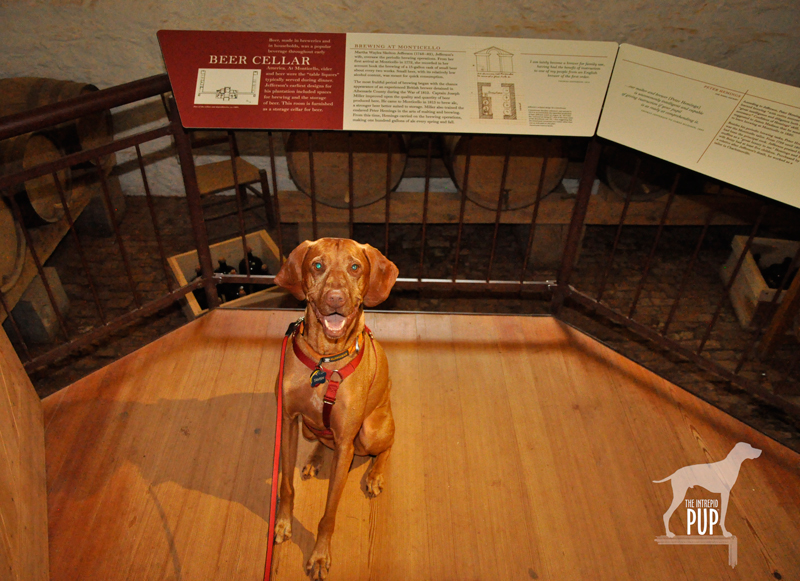
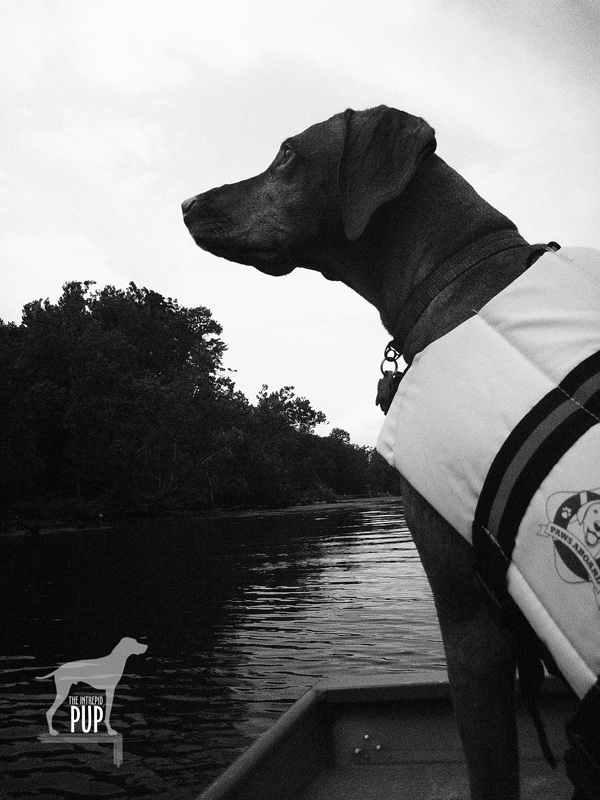 Are you indoors reading this? If so, take it outside!
Are you indoors reading this? If so, take it outside!